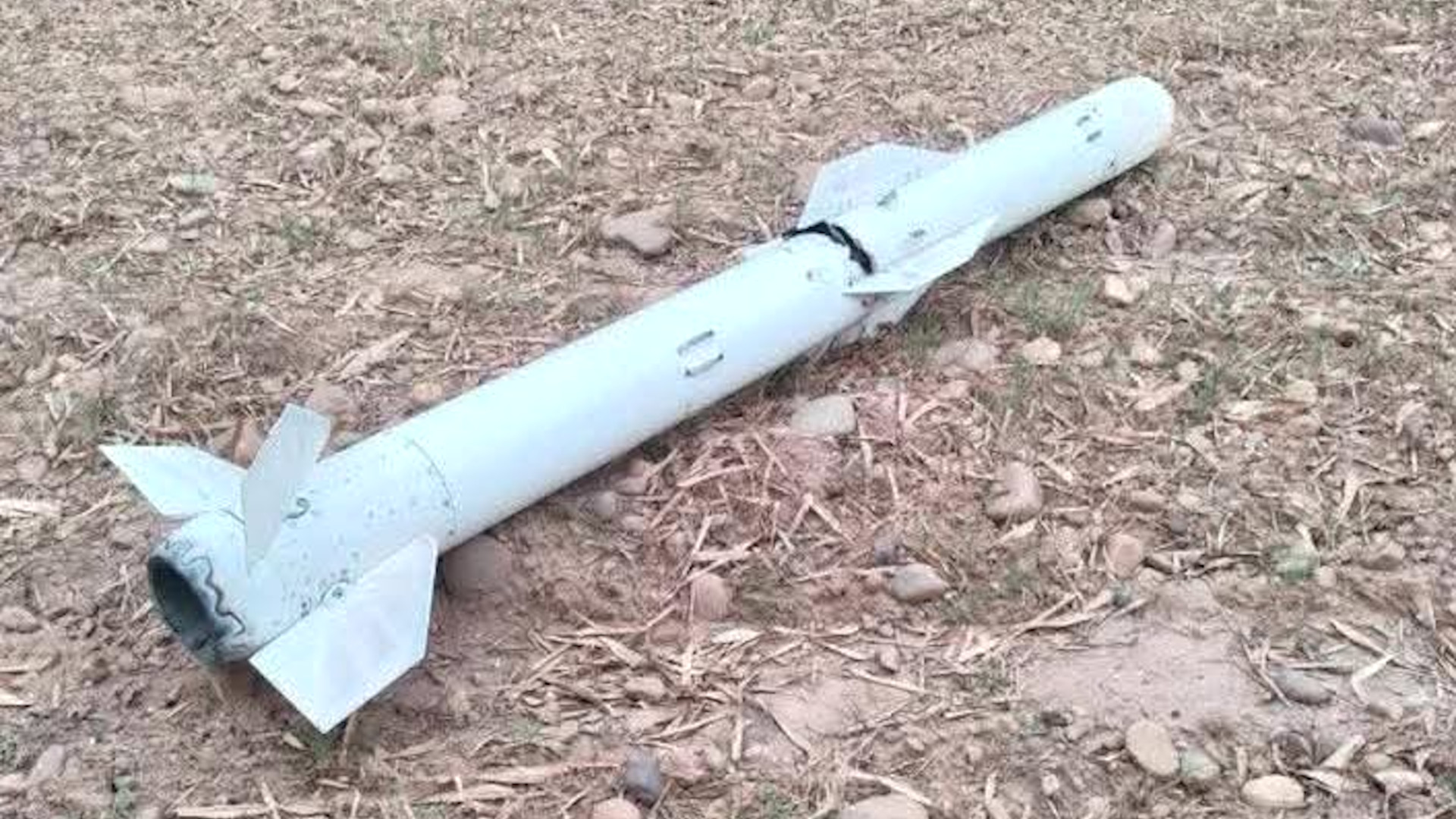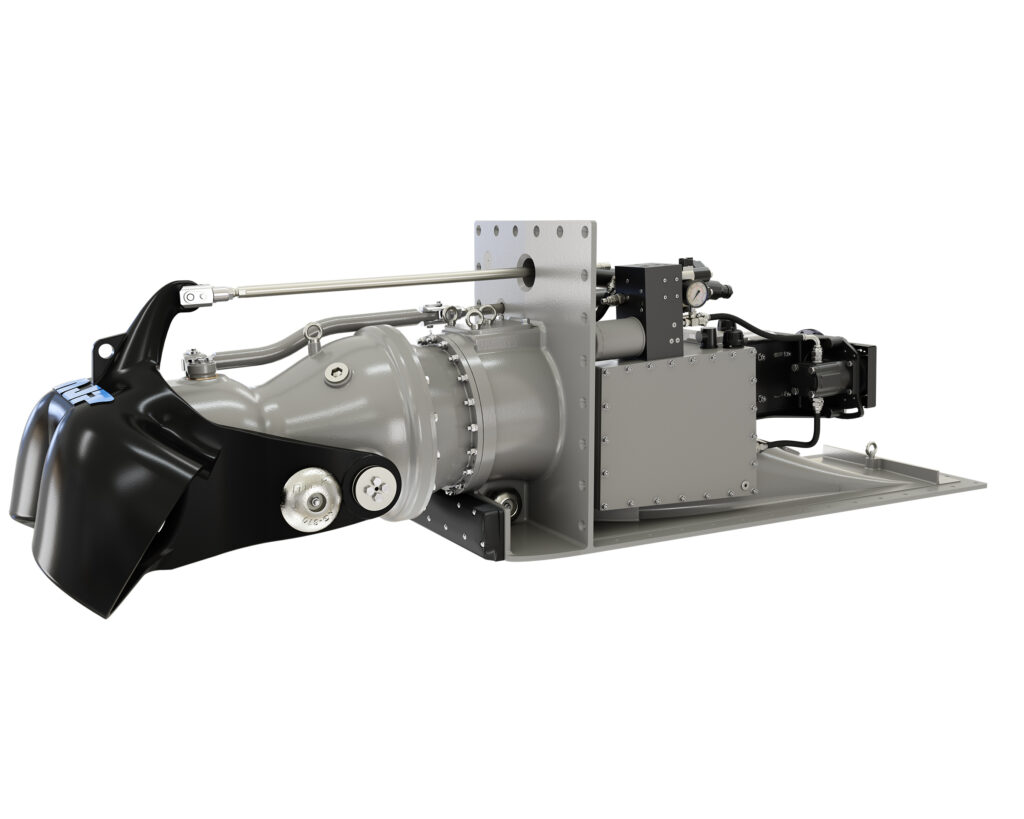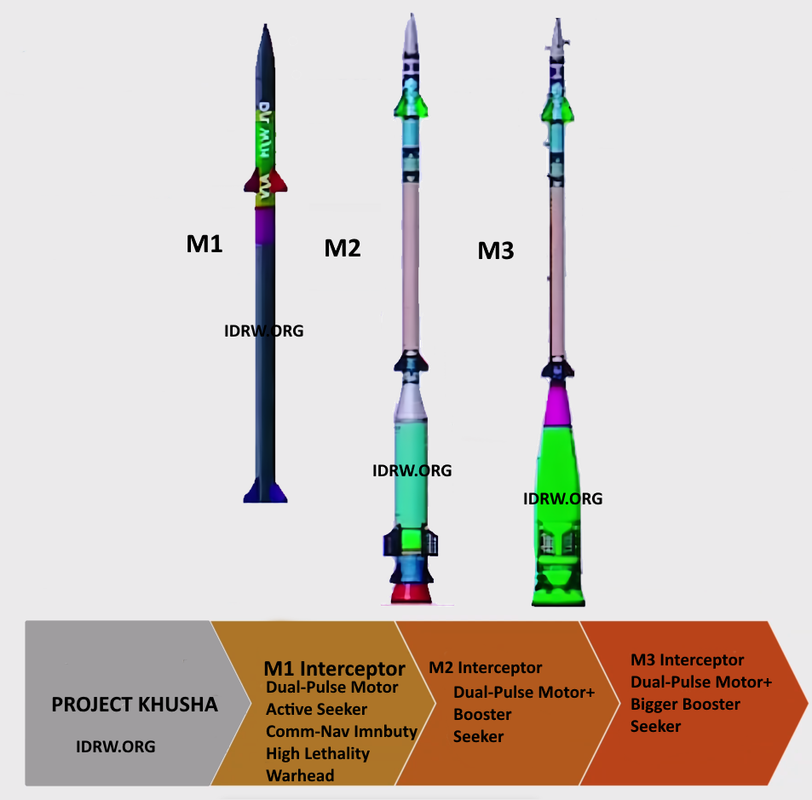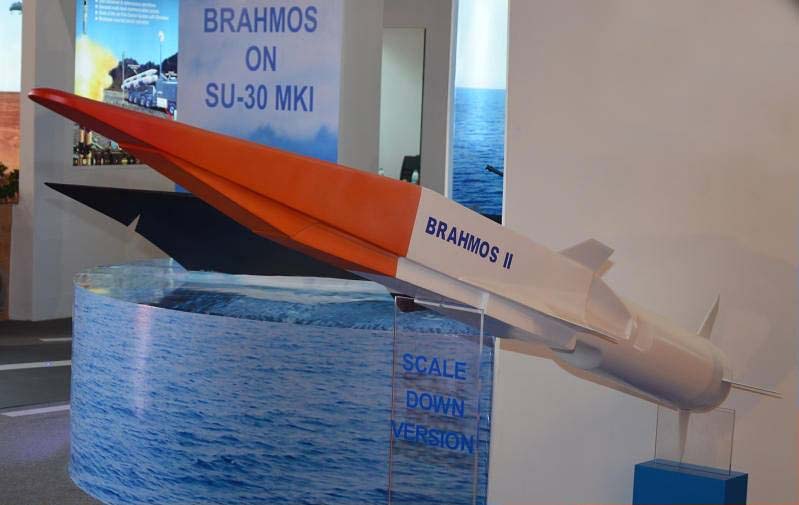SOURCE: RAUNAK KUNDE / NEWS BEAT / IDRW.ORG

In a significant milestone for India’s indigenous defense manufacturing, VEM Technologies is set to hand over the Centre Fuselage (CF) assembly of the Tejas MK1A to Hindustan Aeronautics Limited (HAL) on May 30, 2025. This delivery marks a crucial step in the production of the advanced light combat aircraft, further strengthening the Indian Air Force’s fleet with homegrown technology.
VEM Technologies, a key player in aerospace manufacturing, has successfully produced over 1,500 components for the CF assembly of the Tejas MK1A. Each component has undergone rigorous quality assurance checks, ensuring compliance with the stringent standards required for military aviation. The CF assembly is a critical structural element of the aircraft, housing vital systems and contributing to the overall aerodynamic performance of the Tejas MK1A.
Continue readingSOURCE: RAUNAK KUNDE / NEWS BEAT / IDRW.ORG


Following the resounding success of India’s Akash missile system in neutralizing Pakistani drones and rockets during recent conflicts, the Defence Research and Development Organisation (DRDO) is now focusing on boosting the system’s performance. Sources indicate that DRDO is exploring the use of alternative propulsion fuels to enhance the range and efficiency of the Akash missile system without necessitating modifications to its existing airframe or missile design.
The Akash missile, a cornerstone of India’s air defense network, has proven its mettle by effectively countering threats such as Pakistan’s HATF-I and Fatah-II Short-Range Ballistic Missiles (SRBMs) alongside unmanned aerial vehicles (UAVs). Building on this success, DRDO aims to optimize the ramjet sustainer motor, a key component of the Akash system, by experimenting with next-generation propulsion fuels. These advanced fuels are expected to improve the missile’s performance, potentially extending its range and enhancing its speed and maneuverability.
Continue readingSOURCE: AFI


In modern warfare, the ability to neutralize advanced enemy air defense systems is a critical determinant of battlefield success. As adversaries deploy increasingly sophisticated integrated air defense systems (IADS), including long-range surface-to-air missiles (SAMs) and radar networks, the need for platforms that can penetrate these defenses, strike high-value ground assets, and minimize risk to expensive assets has become paramount.
India’s Defence Research and Development Organisation (DRDO), in collaboration with Hindustan Aeronautics Limited (HAL), is addressing this challenge through the development of the Combat Air Teaming System (CATS) Warrior—a loyal wingman drone designed to complement advanced manned platforms like the Advanced Medium Combat Aircraft (AMCA). The CATS Warrior is not just a force multiplier; it represents a paradigm shift in how India plans to tackle enemy air defenses in a cost-effective and low-risk manner.
Continue readingSOURCE: AFI


On the morning of May 10, 2025, a dramatic video captured by residents near the Line of Control (LoC) in India showcased the Indian Air Force’s Akash Surface-to-Air Missile (SAM) system successfully intercepting a Pakistani Fatah-1 Guided Multiple Launch Rocket System (GMLRS). The footage, which has since gone viral across social media platforms, highlights India’s robust air defense capabilities amid escalating tensions with Pakistan. This incident, part of a broader military exchange following India’s Operation Sindoor, underscores the effectiveness of the indigenously developed Akash SAM in countering advanced regional threats.
The video, reportedly filmed by local residents in the Sirsa region of Haryana, captures the moment an Akash missile streaks into the sky and intercepts a Pakistani Fatah-1 missile mid-air. The footage shows a bright explosion as the incoming projectile is neutralized, preventing it from reaching its intended target, speculated to be a strategic location near New Delhi. The interception occurred around 12:15 AM on May 10, 2025, as part of Pakistan’s retaliatory Operation Bunyan ul Marsoos, launched in response to Indian airstrikes on Pakistani airbases the previous day.
Continue readingSOURCE: AFI


In a significant move to enhance its maritime security, India has revived a long-pending proposal for the indigenous construction of 12 specialized warships designed to detect, track, and destroy underwater mines. These mines, often laid by enemy forces to choke harbors, disrupt ports, and cripple shipping and maritime trade, pose a severe threat to India’s naval operations and economic lifelines. According to defense ministry sources, the procurement case for these 12 advanced Mine Countermeasure Vessels (MCMVs) for the Indian Navy, estimated at Rs 44,000 crore, is set to be presented soon before the Defence Acquisitions Council (DAC), chaired by Defence Minister Rajnath Singh, for the grant of “Acceptance of Necessity” (AoN).
Following the AoN approval, the Ministry of Defence will issue a Request for Proposal (RFP) through an “open tender” process, inviting Indian shipyards to submit their techno-commercial bids. This aligns with India’s push for self-reliance in defense manufacturing under the Atmanirbhar Bharat initiative, ensuring that the MCMVs are built domestically. However, sources caution that the timeline for delivery remains lengthy. “It will take at least 7-8 years, if not more, for the first MCMV to roll out after the contract is inked,” a defense ministry source revealed, highlighting the complexity of designing and constructing such specialized vessels.
Continue readingSOURCE: AFI


In a powerful display of public support for India’s self-reliance in defense technology, the hashtag #FundKaveriEngine has surged to the top of X trends across India, amassing significant traction with thousands of posts. As of May 26, 2025, the campaign, which calls for increased funding and prioritization of the Kaveri engine program, has captured the attention of defense enthusiasts, analysts, and citizens alike, highlighting the strategic importance of developing indigenous aero-engines for India’s fighter jets and unmanned aerial vehicles (UAVs).
The Kaveri engine program, led by the Gas Turbine Research Establishment (GTRE) under the Defence Research and Development Organisation (DRDO), has been a critical yet challenging endeavor since its inception in 1989. Initially intended to power the Light Combat Aircraft (LCA) Tejas, the program faced setbacks due to thrust deficiencies and weight issues, leading to its delinking from the Tejas in 2008. Despite these challenges, recent progress, including the Kaveri Derivative Engine (KDE) achieving 46-49kN of thrust and clearance for inflight testing in 2024, has reignited hope in the program’s potential.
Continue readingSOURCE: IDRW.ORG


In a significant development following the recent India-Pakistan aerial clashes, Japanese radar engineers and electronic warfare (EW) experts are set to be the first foreign specialists to access detailed information on the Chinese-made PL-15E beyond-visual-range air-to-air missile (BVRAAM) recovered by India.
According to sources close to idrw.org, the missiles, fired by Pakistan Air Force (PAF) jets during Operation Sindoor, were rendered ineffective by India’s advanced EW systems, leading to the recovery of several near-intact PL-15E units, complete with their guidance systems and seekers. This breakthrough offers a rare opportunity to study one of China’s most advanced air-to-air weapons, drawing global attention as nations like Japan seek to counter the growing threat of Chinese military technology.
Continue readingSOURCE: IDRW.ORG


Larsen & Toubro’s Precision Engineering Systems (L&T PES) has solidified its position as a trailblazer in India’s defence innovation landscape with the successful sea trials of its indigenously developed 651 kW (885 hp) Waterjet Propulsion System in April 2025, integrated into the Indian Navy’s Fast Interceptor Craft (FIC). Building on this milestone, L&T is now setting its sights on a more powerful 3500 kW (4760 hp) waterjet propulsion system.
The 651 kW Waterjet Propulsion System, developed under the Defence Research and Development Organisation’s (DRDO) Technology Development Fund (TDF) scheme, boasts over 70% indigenous content and was validated for high-speed operations, maneuverability, and shallow-water performance aboard FICs. These vessels, critical for coastal defence, surveillance, and anti-smuggling missions, benefit from waterjets’ ability to generate thrust by accelerating water through a pump, offering superior control and efficiency compared to conventional propellers. The system’s success, highlighted by DRDO’s X post (@DrdoTdf), demonstrates L&T’s capability to deliver reliable, homegrown maritime solutions, setting the stage for scaling up to the 3500 kW class.
Continue readingSOURCE: AFI


Hindustan Aeronautics Limited (HAL) has confirmed its readiness to manufacture 24 Tejas Mk1A fighter jets per year starting in 2027, contingent on the Indian Air Force (IAF) and the Ministry of Defence (MoD) clearing additional orders for 97 units of the advanced light combat aircraft, in addition to the 83 units ordered in 2021. This ambitious production ramp-up underscores HAL’s commitment to bolstering India’s indigenous defense capabilities under the Atmanirbhar Bharat initiative.
To achieve this enhanced production capacity, HAL has activated a third production line at its Nashik plant, which will contribute an additional 8 units per year to the existing capacity of 16 units from its two Bangalore facilities. This strategic expansion strengthens HAL’s ability to meet the IAF’s growing demand for the Tejas Mk1A, an advanced variant of the Light Combat Aircraft (LCA) featuring improved avionics, radar systems, and weapon capabilities.
Continue readingSOURCE: AFI


A recent report by a prominent European think tank has underscored the Indian Air Force’s (IAF) overwhelming strategic advantage over the Pakistan Air Force (PAF) in the context of precision strikes and airbase targeting. The analysis, focusing on the IAF’s performance in a recent conflict with Pakistan, highlights the IAF’s ability to cripple key PAF airbases in the first wave of a potential war, potentially neutralizing Pakistan’s air operations for an extended period. The report emphasizes the IAF’s precision cruise missile capabilities, particularly with systems like the BrahMos and SCALP, and points to Pakistan’s geographical limitations as a critical vulnerability.
According to the think tank, the IAF’s ability to target and disable PAF runways, hangars, and critical infrastructure has demonstrated a decisive edge in modern warfare. During the recent conflict, the IAF executed coordinated precision strikes on 11 of Pakistan’s 13 major airbases, using a combination of BrahMos supersonic cruise missiles, SCALP air-launched cruise missiles, and other precision-guided munitions like HAMMER and Crystal Maze. These strikes, part of Operation Sindoor launched on May 7, 2025, targeted key PAF bases, including Nur Khan (Chaklala, Rawalpindi), Rafiqui (Shorkot), Murid (Chakwal), Rahim Yar Khan, Sukkur, Chunian (Kasur), Bholari, Jacobabad, Sargodha, Skardu, and radar sites at Pasrur and Sialkot. The operation inflicted significant damage, with reports confirming the destruction of runways, command centers, radar installations, and high-value assets, including an airborne early warning and control (AEW&C) aircraft and long-endurance UAVs.
Continue readingSOURCE: AFI


In a significant move toward modernizing its battlefield capabilities, the Indian Army has initiated the procurement process for battlefield reconnaissance drones, signaling a continued shift toward leveraging advanced technologies for enhanced situational awareness and precision warfare.
The procurement aims to equip frontline units with tactical unmanned aerial systems (UAS) capable of providing real-time surveillance, target acquisition, and reconnaissance data in complex operational environments. This step is aligned with the Army’s broader transformation agenda focused on network-centric warfare and battlefield transparency.
Continue readingSOURCE: AFI


The iconic 84mm Carl Gustaf rocket launcher, a battlefield staple for decades, has received a game-changing upgrade with the introduction of the FURY Thermal Imaging-Based Fire Control Sight. This cutting-edge targeting system elevates the Carl Gustaf to new heights of lethality, enabling day and night operations, automatic target tracking, and a significantly higher first-hit probability. With the FURY Sight, precision meets power, redefining the capabilities of this versatile weapon system for modern warfare.
The FURY Sight integrates advanced high-definition (HD) thermal imaging with auto-target tracking, providing soldiers with unmatched situational awareness and precision in any operational environment. Whether engaging targets in broad daylight, pitch-black darkness, or adverse weather conditions, the FURY Sight ensures operators can detect, track, and neutralize threats with confidence. Its intuitive design and rugged construction make it a reliable companion for troops facing the complexities of today’s battlefields.
Continue readingSOURCE: AFI


In a biting display of mockery, an image gifted by Pakistan’s Prime Minister Shehbaz Sharif to Army Chief General Asim Munir has become the subject of widespread ridicule, exposing an embarrassing blunder. The framed artwork, presented during a formal ceremony on May 24, 2025, purportedly depicting Pakistan’s military prowess, was revealed to be a photoshopped image originally sourced from a 2019 Chinese military drill, highlighting a clumsy attempt to project strength amid recent battlefield setbacks.
The image in question, prominently featuring a fiery scene of artillery rockets lighting up the night sky, was identified as a photograph of a PHL-03 long-range multiple launch rocket system (MLRS) firing during a People’s Liberation Army (PLA) 74th Group Army exercise. The original photo, published by China Military Online on August 20, 2019, was credited to editor Li Jiayao and captioned “Artillery battery fires rockets at night – Ministry of National Defense.” A corresponding post on X from the same day further confirmed the image’s origin, noting the PLA’s 74th Group Army’s involvement. However, the version gifted to General Munir had been altered, with Pakistani military insignia and branding superimposed to falsely suggest it depicted a Pakistani operation.
Continue readingSOURCE: RAUNAK KUNDE / NEWS BEAT / IDRW.ORG


India’s quest for self-reliance in defense technology has taken a significant leap forward with Project Kusha, an indigenous long-range air defense system being developed by the Defence Research and Development Organisation (DRDO). Designed to match the capabilities of Russia’s S-400 Triumf, Project Kusha is poised to become a cornerstone of India’s multi-layered air defense architecture. Featuring three types of interceptor missiles with ranges of 150 km, 250 km, and 350 km, the system aims to neutralize a wide array of aerial threats, from stealth fighters to ballistic missiles.
However, Project Kusha is not just a standalone system—it marks the first phase of a broader, multi-phase program to develop very long-range surface-to-air interceptor missiles, drawing inspiration from India’s Ballistic Missile Defence (BMD) program. With plans for Phase-II and maybe even a Phase-III, including anti-hypersonic capabilities, India is positioning itself to rival or even surpass advanced systems like Russia’s S-500, signaling a transformative shift in its strategic defense posture.
Continue readingSOURCE: RAUNAK KUNDE / NEWS BEAT / IDRW.ORG


India and Russia are poised to resume high-level discussions for the co-development of the BrahMos-II, a next-generation hypersonic cruise missile aimed at achieving speeds of Mach 6 or higher, potentially drawing inspiration from Russia’s 3M22 Zircon (also spelled Tsirkon), a scramjet-powered, nuclear-capable hypersonic missile. This ambitious project, initially proposed by BrahMos Aerospace nearly a decade ago, faced hurdles due to Russia’s reluctance to share advanced hypersonic technology and concerns from the Indian Armed Forces over the missile’s high per-unit cost. However, a renewed global focus on hypersonic weaponry has reignited interest in the program, prompting both nations to explore collaboration to bolster their strategic capabilities.
The BrahMos missile, a product of the Indo-Russian joint venture BrahMos Aerospace, established in 1998, is the world’s fastest supersonic cruise missile, capable of reaching speeds up to Mach 3.5 and ranges of 290–800 km, depending on the variant. Deployed across the Indian Army, Navy, and Air Force, it has proven its versatility with land, sea, air, and submarine-launched configurations. The missile’s precision, stealthy radar signature, and “fire-and-forget” capability have made it a cornerstone of India’s defense strategy, with over 130 successful tests and operational use in exercises like Operation Sindoor in May 2025.
Continue reading